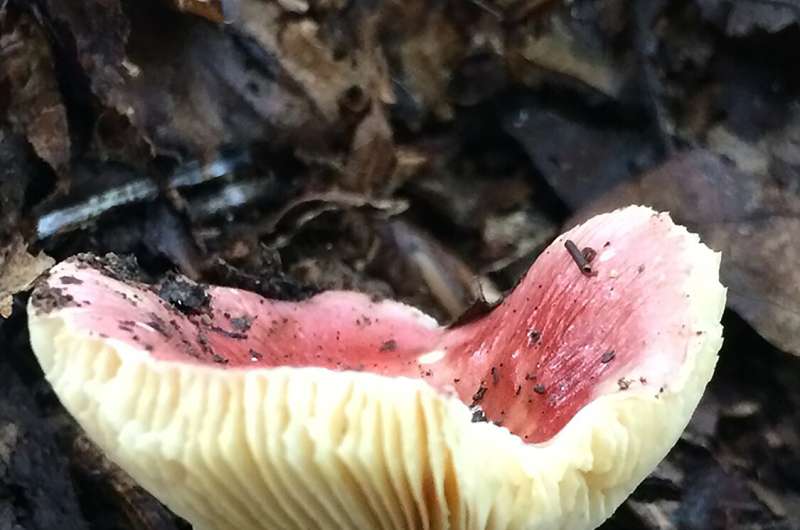U.S. forests changes are double-edged sword for environment

Climate change, nitrogen deposition and fire suppression are leading to shifts in the types of trees that dominate American forests. These changes will have environmental consequences, potentially positive and negative, according to a Purdue University study.
Songlin Fei, a forest ecologist in Purdue's Department of Forestry and Natural Resources, with colleagues from the U.S. Forest Service and Indiana University, developed a mycorrhizal tree map of the contiguous United States. The map, developed based on more than 3 million trees, shows the abundance of trees associated with mycorrhizal fungi, which have symbiotic relationships with tree roots.
Arbuscular mycorrhizal fungi grow inside the tissues of roots and are more common on trees such as maple, ash and yellow poplar. Ectomycorrhizal fungi live on the outside of a plant's roots and are often found on pine, oak, hickory and beech trees. The fungi act as extensions to a tree's root system, allowing them to reach more water and nutrients. In return, the trees provide needed carbon for fungi survival.
Over the last three decades, the authors find, forests dominated by ectomycorrhizal trees have given way to those dominated by arbuscular mycorrhizal species. That's due in large part because arbuscular mycorrhizal trees are better suited for the conditions associated with climate change.
"The changes in precipitation and temperature patterns will influence certain trees," said Fei, whose findings were reported in the journal Science Advances. "We have seen that trees associated with arbuscular mycorrhiza are becoming more abundant in regions that experienced rapid increase in temperature and precipitation, and they are expanding to the north and west."
Fires and nitrogen are also playing important roles. Many ectomycorrhizal-associated tree species need bare soil to germinate, making forest fires important to their regeneration. But fire-suppressive management practices have given arbuscular mycorrhizal-associated trees, which often are fire-intolerant, an advantage.
"Fire is a component in the system that controls brushy, low-canopy stems," Fei said. "The lack of fire or changing of fire patterns promotes fire-sensitive species but doesn't help fire-dependent species."
Arbuscular mycorrhizal-associated trees are also associated with quicker nitrogen cycles. Forests dominated by these trees break down sticks and leaves faster, creating more nitrogen in the soil.
Nitrogen is key to the consequences Fei predicts from these forest changes. As arbuscular mycorrhizal-associated trees cycle through nitrogen more quickly, there is an increased chance of reaching and polluting nearby waterways. Conversely, those same trees will capture and store more atmospheric carbon – a major driver of climate change – in the trees themselves and in forest soil.
"The key message is that human activity is affecting nutrient cycling. We've changed the speed of the machine," Fei said. "There's a potential to store more carbon, which would be good for combating climate change. But we are also increasing the amount of nitrogen that might leach from soils into water, and that could create other environmental issues."
More information: Insu Jo et al. Shifts in dominant tree mycorrhizal associations in response to anthropogenic impacts, Science Advances (2019). DOI: 10.1126/sciadv.aav6358
Journal information: Science Advances
Provided by Purdue University





















